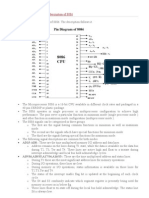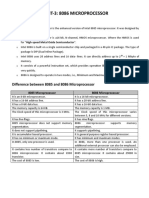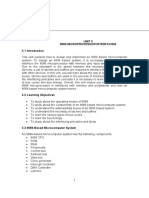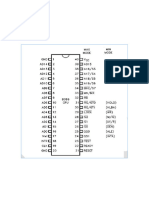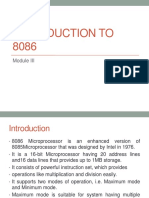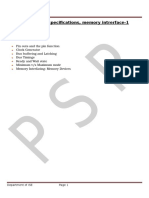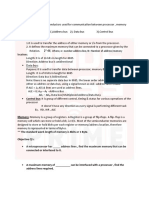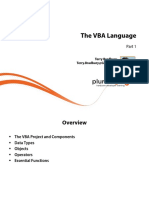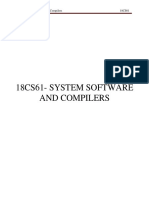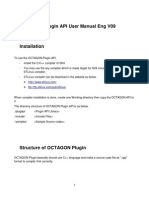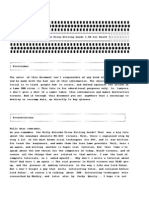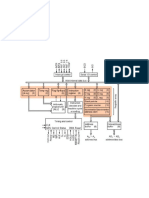0 ratings0% found this document useful (0 votes)
11 viewsMicroproject Unit 4 DTM
Microproject Unit 4 DTM
Uploaded by
ishwaribadhe35Copyright:
© All Rights Reserved
Available Formats
Download as PPTX, PDF, TXT or read online from Scribd
Microproject Unit 4 DTM
Microproject Unit 4 DTM
Uploaded by
ishwaribadhe350 ratings0% found this document useful (0 votes)
11 views20 pagesOriginal Title
Microproject Unit 4 Dtm
Copyright
© © All Rights Reserved
Available Formats
PPTX, PDF, TXT or read online from Scribd
Share this document
Did you find this document useful?
Is this content inappropriate?
Copyright:
© All Rights Reserved
Available Formats
Download as PPTX, PDF, TXT or read online from Scribd
Download as pptx, pdf, or txt
0 ratings0% found this document useful (0 votes)
11 views20 pagesMicroproject Unit 4 DTM
Microproject Unit 4 DTM
Uploaded by
ishwaribadhe35Copyright:
© All Rights Reserved
Available Formats
Download as PPTX, PDF, TXT or read online from Scribd
Download as pptx, pdf, or txt
You are on page 1of 20
K K Wagh Polytechnic,Nashik
UNIT 4: Microprocessor:8086 and
Modern Microprocessor
CO4: Use 8086 microprocessor environment build
and execute assembly language programs.
(12 marks)
4.1 Programming model of 8086 assembly language program assembler
directives
BY Ishwari Badhe& Bhoomi Jadhav
Introduction to Microprocessor
•A microprocessor is a multipurpose, clock driven electronic component that is used by computer
• to do it’s work.
•It accepts binary information as input, processes it according to instruction stored in its memory
•and provides results as output.
•It is just like central processing unit(CPU) on a single integrated circuit.
Features of 8086
The most prominent features of a 8086 microprocessor are as follows −
•It has an instruction queue, which is capable of storing six instruction
bytes from the memory resulting in faster processing.
•It was the first 16-bit processor having 16-bit ALU, 16-bit registers,
internal data bus, and 16-bit external data bus resulting in faster
processing.
•It is available in 3 versions based on the frequency of operation −
8086 → 5MHz
(c)8086-1 → 10 MHz
•It uses two stages of pipelining, i.e. Fetch Stage and Execute Stage,
which improves performance.
•Fetch stage can prefetch up to 6 bytes of instructions and stores them
in the queue.
•Execute stage executes these instructions.
•It has 256 vectored interrupts.
•It consists of 29,000 transistors.
Comparison between 8085 & 8086 Microprocessor
Size − 8085 is 8-bit microprocessor, whereas 8086 is 16-bit microprocessor.
Address Bus − 8085 has 16-bit address bus while 8086 has 20-bit address bus.
Memory − 8085 can access up to 64Kb, whereas 8086 can access up to 1 Mb of
memory.
Instruction − 8085 doesn’t have an instruction queue, whereas 8086 has an
instruction queue.
Pipelining − 8085 doesn’t support a pipelined architecture while 8086 supports a
pipelined architecture.
I/O − 8085 can address 2^8 = 256 I/O's, whereas 8086 can access 2^16 = 65,536 I/O's.
Cost − The cost of 8085 is low whereas that of 8086 is high.
Architecture of 8086
The following diagram depicts the architecture
of a 8086 Microprocessor −
4.1Programming model of 8086 assembly language
program assembler directives
(a) The DB directive
(b) The DW directive
(c) The DD directive
(d) The STRUCT (or STRUC) and ENDS directives
(counted as one)
(e)The EQU Directive
(f)The COMMENT directive
(g)ASSUME
(h) EXTERN
(i) GLOBAL
(j) SEGMENT
(k)OFFSET
(l) PROC
(m)GROUP
(n) INCLUDE
Pin diagram of 8086 microprocessor:
Pin diagram of 8086 microprocessor is as
given below:
Intel 8086 is a 16-bit HMOS microprocessor. It
is available in 40 pin DIP chip. It uses a 5V DC
supply for its operation. The 8086 uses a 20-
line address bus. It has a 16-line data bus.
The 20 lines of the address bus operate in
multiplexed mode. The 16-low order address
bus lines have been multiplexed with data
and 4 high-order address bus lines have been
multiplexed with status signals.
AD0-AD15: Address/Data bus. These are low
order address bus. They are multiplexed with
data. When AD lines are used to transmit
memory address the symbol A is used instead
of AD, for example A0-A15. When data are
transmitted over AD lines the symbol D is
used in place of AD, for example D0-D7, D8-
D15 or D0-D15.
A16-A19: High order address bus. These are
S2, S1, S0: Status pins. These pins are active
during T4, T1 and T2 states and is returned to
passive state (1,1,1 during T3 or Tw (when ready is
inactive). These are used by the 8288 bus
controller for generating all the memory and I/O
operation) access control signals. Any change in
S2, S1, S0 during T4 indicates the beginning of a
bus
S2 cycle.
S1 S0 Characteristics
0 0 0 Interrupt acknowledge
0 0 1 Read I/O port
0 1 0 Write I/O port
0 1 1 Halt
1 0 0 Code access
1 0 1 Read memory
1 1 0 Write memory
1 1 1 Passive state
A16/S3, A17/S4, A18/S5, A19/S6 : The specified address lines are multiplexed with
corresponding status signals.
A17/S4 A16/S3 Function
0 0 Extra segment access
0 1 Stack segment access
1 0 Code segment access
1 1 Data segment access
HE’/S7: Bus High Enable/Status. During T1 it is low. It is used to enable
data onto the most significant half of data bus, D8-D15. 8-bit device
connected to upper half of the data bus use BHE (Active Low) signal. It
is multiplexed with status signal S7. S7 signal is available during T2, T3
and T4.
RD’: This is used for read operation. It is an output signal. It is active
when low.
READY : This is the acknowledgement from the memory or slow device
that they have completed the data transfer. The signal made available
by the devices is synchronized by the 8284A clock generator to provide
ready input to the microprocessor. The signal is active high(1).
INTR : Interrupt Request. This is triggered input. This is sampled during the last clock cycles of
each instruction for determining the availability of the request. If any interrupt request is found
pending, the processor enters the interrupt acknowledge cycle. This can be internally masked after
resulting the interrupt enable flag. This signal is active high(1) and has been synchronized
internally.
NMI : Non maskable interrupt. This is an edge triggered input which results in a type II interrupt. A
subroutine is then vectored through an interrupt vector lookup table which is located in the system
memory. NMI is non-maskable internally by software. A transition made from low(0) to high(1)
initiates the interrupt at the end of the current instruction. This input has been synchronized
internally.
INTA : Interrupt acknowledge. It is active low(0) during T2, T3 and Tw of each interrupt
acknowledge cycle.
MN/MX’ : Minimum/Maximum. This pin signal indicates what mode the processor will operate in.
RQ’/GT1′, RQ’/GT0′ : Request/Grant. These pins are used by local bus masters used to force the
microprocessor to release the local bus at the end of the microprocessor’s current bus cycle. Each
of the pin is bi-directional. RQ’/GT0′ have higher priority than RQ’/GT1′.
LOCK’ : Its an active low pin. It indicates that other system bus masters have not been allowed to
gain control of the system bus while LOCK’ is active low(0). The LOCK signal will be active until the
completion of the next instruction.
TEST’ : This examined by a ‘WAIT’ instruction. If the TEST pin goes low(0), execution will continue,
else the processor remains in an idle state. The input is internally synchronized during each of the
clock cycle on leading edge of the clock.
CLK : Clock Input. The clock input provides the basic timing for processing operation and bus control
activity. Its an asymmetric square wave with a 33% duty cycle.
RESET : This pin requires the microprocessor to terminate its present activity immediately. The signal
must be active high(1) for at least four clock cycles.
Vcc : Power Supply( +5V D.C.)
GND : Ground
QS1,QS0 : Queue Status. These signals indicate the status of the internal 8086 instruction queue
according to the table shown below:
QS1 QS0 Status
0 0 No operation
0 1 First byte of op code from queue
1 0 Empty the queue
1 1 Subsequent byte from queue
Flag Registor:The Flag Register in the 8086 microprocessor is a 16-bit register that
contains the current state of the processor. It is divided into two groups: Condition Flags and
Control Flags.
Condition Flags:1. Carry Flag (CF): Set if an arithmetic operation generates a carry or borrow.
2. Parity Flag (PF): Set if the result of an operation has even parity.
3. Auxiliary Carry Flag (AF): Set if an arithmetic operation generates a carry from bit 3 to bit
4. Zero Flag (ZF): Set if the result of an operation is zero.
5. Sign Flag (SF): Set if the result of an operation is negative.
6. Overflow Flag (OF): Set if an arithmetic operation generates an overflow.
Control Flags:1. Trap Flag (TF): Enables or disables single-step mode for debugging.
2. Interrupt Flag (IF): Enables or disables maskable interrupts.
3. Direction Flag (DF): Controls string instruction direction (increment or decrement).
4. Overflow Flag (OF): Also used as a control flag to enable or disable overflow detection.
The Flag Register is accessed using the following instructions:- PUSHF: Pushes the Flag
Register onto the stack.- POPF: Pops the Flag Register from the stack.- LAHF: Loads the AH
register with the Flag Register.- SAHF: Stores the AH register into the Flag Register.
M/IO’: This signal is used to distinguish between memory and I/O operations. The M Signal is Active
high whereas the IO’ Signal is Active Low. When this Pin is High, the memory operations takes place.
On the other hand, when the Pin is low, the Input/Output operations from the peripheral devices
takes place.
=DT/R : Data Transmit/Receive. This pin is required in minimum systems, that want to use an 8286
or 8287 data bus transceiver. The direction of data flow is controlled through the transceiver.
DEN: Data enable. This pin is provided as an output enable for the 8286/8287 in a minimum system
which uses transceiver. DEN is active low(0) during each memory and input-output access and for
INTA cycles.
HOLD/HOLDA: HOLD indicates that another master has been requesting a local bus .This is an
active high(1). The microprocessor receiving the HOLD request will issue HLDA (high) as an
acknowledgement in the middle of a T4 or T1 clock cycle.
ALE : Address Latch Enable. ALE is provided by the microprocessor to latch the address into the
8282 or 8283 address latch. It is an active high(1) pulse during T1 of any bus cycle. ALE signal is
never floated, is always integer.
Data declaration directives:
1. DB – The DB directive is used to declare a BYTE -2-BYTE variable – A BYTE is made up of 8 bits.
Declaration examples:
Byte1 DB 10h
Byte2 DB 255 ; 0FFh, the max. possible for a BYTE
CRLF DB 0Dh, 0Ah, 24h ;Carriage Return, terminator BYTE
2. DW – The DW directive is used to declare a WORD type variable – A WORD occupies 16 bits or (2
BYTE).
Declaration examples:
Word DW 1234h
Word2 DW 65535; 0FFFFh, (the max. possible for a WORD)
3. DD – The DD directive is used to declare a DWORD – A DWORD double word is made up of 32 bits
=2 Word’s or 4 BYTE.
Declaration examples:
Dword1 DW 12345678h
Dword2 DW 4294967295 ;0FFFFFFFFh.
4. STRUCT and ENDS directives to define a structure template for grouping data items.
(1) The STRUCT directive tells the assembler that a user defined uninitialized data structure follows.
The uninitialized data structure consists of a combination of the three supported data types. DB,
DW, and DD. The labels serve as zero-based offsets into the structure. The first element’s offset for
any structure is 0. A structure element is referenced with the base “+” operator before the
element’s name.
A Structure ends by using the ENDS directive meaning END of Structure.
Syntax:
...
...
ENDS
(OR)
STRUC
Structure_element_name element_data_type?
...
...
...
ENDS
DECLARATION:
STRUCT
Byte1 DB?
Byte2 DB?
Word1 DW?
Word2 DW?
Dword1DW?
Dword2 DW?
ENDS
Use OF STRUCT:
The STRUCT directive enables us to change the order of items in the structure when, we reform a file
header and shuffle the data. Shuffle the data items in the file header and reformat the sequence of
data declaration in the STRUCT and off you go. No change in the code we write that processes the file
(5) The EQU Directive
The EQU directive is used to give name to some value or symbol. Each time the
assembler finds the given names in the program, it will replace the name with the
value or a symbol. The value can be in the range 0 through 65535 and it can be
another Equate declared anywhere above or below.
The following operators can also be used to declare an Equate:
THIS BYTE
THIS WORD
THIS DWORD
A variable – declared with a DB, DW, or DD directive – has an address and has space
reserved at that address for it in the .COM file. But an Equate does not have an
address or space reserved for it in the .COM file.
Example:
A – Byte EQU THIS BYTE
DB 10
A_ word EQU THIS WORD
DW 1000
A_ dword EQU THIS DWORD
DD 4294967295
Buffer Size EQU 1024
Buffer DB 1024 DUP (0)
Buffed_ ptr EQU $ ; actually points to the next byte after the; 1024th byte in buffer.
(6) Extern:
It is used to tell the assembler that the name or label following the directive are I some other
assembly module. For example: if you call a procedure which is in program module assembled at a
different time from that which contains the CALL instructions ,you must tell the assembler that the
procedure is external the assembler will put information in the object code file so that the linker can
connect the two module together.
Example:
PROCEDURE -HERE SEGMENT
EXTERN SMART-DIVIDE: FAR ; found in the segment; PROCEDURES-HERE
PROCEDURES-HERE ENDS
(7) GLOBAL:
The GLOBAL directive can be used in place of PUBLIC directive .for a name defined in the current
assembly module; the GLOBAL directive is used to make the symbol available to the other modules.
Example:
GLOBAL DIVISOR:
WORD tells the assembler that DIVISOR is a variable of type of word which is in another assembly
module or EXTERN.
(8) SEGMENT:
It is used to indicate the start of a logical segment. It is the name given to the the segment. Example:
the code segment is used to indicate to the assembler the start of logical segment.
(9) PROC: (PROCEDURE)
It is used to identify the start of a procedure. It follows a name we give the procedure.
After the procedure the term NEAR and FAR is used to specify the procedure Example: SMART-DIVIDE
PROC FAR identifies the start of procedure named SMART-DIVIDE and tells the assembler that the
(11) INCLUDE:
It is used to tell the assembler to insert a block of source code from the named file into
the current source module. This shortens the source module. An alternative is use of
editor block command to cop the file into the current source module.
(12) OFFSET:
It is an operator which tells the assembler to determine the offset or displacement of a
named data item from the start of the segment which contains it. It is used to load the
offset of a variable into a register so that variable can be accessed with one of the
addressed modes. Example: when the assembler read MOV BX.OFFSET PRICES, it will
determine the offset of the prices.
(13) GROUP:
It can be used to tell the assembler to group the logical segments named after the
directive into one logical group. This allows the contents of all he segments to be
accessed from the same group. Example: SMALL-SYSTEM GROUP CODE, DATA, STACK-SEG.
Thank you
You might also like
- Simple Serial Protocol (SSP)Document19 pagesSimple Serial Protocol (SSP)D Krishna Kumar100% (5)
- SIEMENS Indirect AdressingDocument7 pagesSIEMENS Indirect Adressinglakolla00No ratings yet
- Signal Description of 8086 MicroprocessorDocument8 pagesSignal Description of 8086 MicroprocessorRabiul Robi100% (1)
- Arinc 429-16Document563 pagesArinc 429-16James V. Mullins100% (6)
- Unit-1 MMC 8086Document20 pagesUnit-1 MMC 8086yash kumarNo ratings yet
- Mic Unit 1. SelfDocument21 pagesMic Unit 1. SelfPragati DagaleNo ratings yet
- 8086 NotesDocument43 pages8086 NotesSuma LathaNo ratings yet
- Overview or Features of 8086: It Is A 16-Bit MicroprocessorDocument33 pagesOverview or Features of 8086: It Is A 16-Bit MicroprocessorSamuel KuantumNo ratings yet
- Unit 2 8086 System Bus Structures FullunitDocument36 pagesUnit 2 8086 System Bus Structures Fullunitlauro eugin brittoNo ratings yet
- Maximum Mode 8086 SystemDocument9 pagesMaximum Mode 8086 Systemchenna838No ratings yet
- Today's Content: Microprocessor Notes Lecture #1Document15 pagesToday's Content: Microprocessor Notes Lecture #1ayushNo ratings yet
- Pin Diagram of 8086 and Pin Description of 8086Document12 pagesPin Diagram of 8086 and Pin Description of 8086V'nod Rathode BNo ratings yet
- U3 8086 MicroprocessorDocument10 pagesU3 8086 MicroprocessorNishant Singh ChauhanNo ratings yet
- Overview or Features of 8086Document33 pagesOverview or Features of 8086Supraja SundaresanNo ratings yet
- 8086 FullDocument72 pages8086 FullNandhini Nachiyar100% (4)
- Unit-I (8086) : Microprocessor and MicrocontrollersDocument22 pagesUnit-I (8086) : Microprocessor and MicrocontrollerskesavantNo ratings yet
- Mic Unit1Document21 pagesMic Unit1xboyxman1000No ratings yet
- 1.1 Signal Descriptions - of 8086Document8 pages1.1 Signal Descriptions - of 8086Khalifa EltayebNo ratings yet
- Home Microprocessor Computer Fundamentals Computer Network Java HTML CSSDocument19 pagesHome Microprocessor Computer Fundamentals Computer Network Java HTML CSSShravani SalunkeNo ratings yet
- MIC Chap 1 NotesDocument15 pagesMIC Chap 1 NotesSonali AhireNo ratings yet
- Microprocessor 8086Document9 pagesMicroprocessor 8086pranalikatad2585No ratings yet
- MicroprocessorDocument15 pagesMicroprocessorAhsan FarooqNo ratings yet
- Pin Configuration of 8086Document12 pagesPin Configuration of 8086Sasi BhushanNo ratings yet
- Comp 5th UnitDocument20 pagesComp 5th UnitIrfan NanasanaNo ratings yet
- 2-16 Bit Microprocessor 8086Document20 pages2-16 Bit Microprocessor 8086afzal_a75% (4)
- 8086 Pin DiagramDocument9 pages8086 Pin Diagram12343567890100% (2)
- Pin Diagram of 8086 MicroprocessorDocument14 pagesPin Diagram of 8086 Microprocessorkranthi6190No ratings yet
- 8086 Hardware Specification: Segment 5Document19 pages8086 Hardware Specification: Segment 5Tigabu YayaNo ratings yet
- Unit-I (Second Half)Document25 pagesUnit-I (Second Half)Soundarrajan RajanNo ratings yet
- Architecture 8085 NotesDocument13 pagesArchitecture 8085 NotesMd Irfan AnsariNo ratings yet
- Unit III MPMC MaterialDocument33 pagesUnit III MPMC Materialsree2728No ratings yet
- Unit 1 NotesDocument10 pagesUnit 1 NotesVishal DeoreNo ratings yet
- 8086 PinDocument13 pages8086 PinArvind ShrivastavaNo ratings yet
- 20cat352 Unit 2 NotesDocument11 pages20cat352 Unit 2 NotesNehaNo ratings yet
- EE6502MPMC1Document31 pagesEE6502MPMC1nirmal_inboxNo ratings yet
- Unit 3 8086 Microprocessor InterfacingDocument29 pagesUnit 3 8086 Microprocessor InterfacingDere JesusNo ratings yet
- Unit III 8086 Microprocessor InterfacingDocument26 pagesUnit III 8086 Microprocessor InterfacingRammanohar Lokiya100% (1)
- Module 2 MicDocument19 pagesModule 2 MicroshnibijuNo ratings yet
- Chapter 6 InterfaceDocument8 pagesChapter 6 InterfacegadisakarorsaNo ratings yet
- 8085 Features, Signal DescriptionDocument13 pages8085 Features, Signal DescriptionRakesh Kumar DNo ratings yet
- Micro 2Document6 pagesMicro 2Zuhaib AyazNo ratings yet
- 8085 MicroprocessorDocument13 pages8085 MicroprocessorSajid Akram100% (1)
- Final CO Unit2 NotesDocument19 pagesFinal CO Unit2 NoteschsaipriyaNo ratings yet
- 8086Document68 pages8086debasish beheraNo ratings yet
- Unit 1 - The Intel Microprocessors 8086 ArchitectureDocument18 pagesUnit 1 - The Intel Microprocessors 8086 Architecturenareshshende.amritNo ratings yet
- Microprocessor - 8086Document14 pagesMicroprocessor - 8086Poet FaroukNo ratings yet
- Microprocessor UNIT-6Document15 pagesMicroprocessor UNIT-6pravin2275767No ratings yet
- Chapter-4: Microprocessor: 8086 and Modern MicroprocessorsDocument50 pagesChapter-4: Microprocessor: 8086 and Modern MicroprocessorsPRABHAKAR MORENo ratings yet
- CT1 SolDocument16 pagesCT1 Soln200vermaNo ratings yet
- 2.1 Pin Details of 8086.docxDocument7 pages2.1 Pin Details of 8086.docxgnaneshdon3No ratings yet
- EE6502 MPMC Two Marks With AnswerDocument10 pagesEE6502 MPMC Two Marks With Answervlsimani9110100% (1)
- Unit 4 Micro Controller 8051Document20 pagesUnit 4 Micro Controller 8051Anbalagan Guru100% (1)
- Unit I PDFDocument25 pagesUnit I PDFSomnath2014No ratings yet
- Pin Diagram of 8086Document21 pagesPin Diagram of 8086Radha SudheeraNo ratings yet
- Pin Diagram of 8086Document21 pagesPin Diagram of 8086adithya123456100% (5)
- 8096 MicrocontrollerDocument51 pages8096 MicrocontrollerNarasimha Murthy Yayavaram67% (3)
- Unit 1Document14 pagesUnit 1deeptipatra220No ratings yet
- 8085 MaterialDocument12 pages8085 MaterialsameerNo ratings yet
- 2.1 Pin Details of 8086Document6 pages2.1 Pin Details of 8086gnaneshdon3No ratings yet
- System BusDocument20 pagesSystem BusshyamNo ratings yet
- Preliminary Specifications: Programmed Data Processor Model Three (PDP-3) October, 1960From EverandPreliminary Specifications: Programmed Data Processor Model Three (PDP-3) October, 1960No ratings yet
- CO & A All Modules Notes 21CS34 PDFDocument190 pagesCO & A All Modules Notes 21CS34 PDFMalini R100% (2)
- Assembly Language AbreviatedDocument7 pagesAssembly Language AbreviatedCalvin Ohsey100% (1)
- GCCS2 CommonTask Module12 Rev6.0Document45 pagesGCCS2 CommonTask Module12 Rev6.0Jorge MezaNo ratings yet
- University Institute of Engineering Department of Computer Science & EngineeringDocument14 pagesUniversity Institute of Engineering Department of Computer Science & EngineeringSayan KarNo ratings yet
- IEC 61131 Standard Assignment #1Document54 pagesIEC 61131 Standard Assignment #1naranbaatar_bNo ratings yet
- Application Example Profibus DP: Revision 1Document52 pagesApplication Example Profibus DP: Revision 1zaheer032No ratings yet
- Chapter 7 MemoryDocument15 pagesChapter 7 MemoryAhmad Abu SaifNo ratings yet
- Reference Data: Arithmetic Core Instruction SetDocument15 pagesReference Data: Arithmetic Core Instruction SetBin Rain MThuanNo ratings yet
- 3 Vba Fundamentals m3 Lang1 SlidesDocument48 pages3 Vba Fundamentals m3 Lang1 SlidesRajesh Kanna NNo ratings yet
- The Lost Art of C Structure PackingDocument13 pagesThe Lost Art of C Structure PackingSanchit AgrawalNo ratings yet
- EE6502 Microprocessors and MicrocontrollersDocument66 pagesEE6502 Microprocessors and Microcontrollerssonu sabooNo ratings yet
- BCA 2nd Sem Assignment 2022-23Document18 pagesBCA 2nd Sem Assignment 2022-23JOJI U.RNo ratings yet
- Synopsis On Asprotect SKE Patching by MaDMAn H3rCuL3sDocument40 pagesSynopsis On Asprotect SKE Patching by MaDMAn H3rCuL3sРоберт ДимитровскиNo ratings yet
- M1 SSCDDocument72 pagesM1 SSCDH3ck AssassinNo ratings yet
- Engineering 4862 Microprocessors: Assignment 2Document6 pagesEngineering 4862 Microprocessors: Assignment 2Ermias MesfinNo ratings yet
- OCTAGON Plugin API User Manual Eng v09Document38 pagesOCTAGON Plugin API User Manual Eng v09Fantana GabrielNo ratings yet
- Use A Microprocessor, A DSP, or BothDocument11 pagesUse A Microprocessor, A DSP, or Bothnqdinh100% (2)
- Virus Writing Guide 1.0 For Win32Document167 pagesVirus Writing Guide 1.0 For Win32Binary_DeathNo ratings yet
- Microprocessor Lab Viva Questions With AnswersDocument13 pagesMicroprocessor Lab Viva Questions With AnswersTanvir KalhaNo ratings yet
- ONFI 1 0 GoldDocument106 pagesONFI 1 0 GoldRaj Shekhar ReddyNo ratings yet
- PLC-Driver (V5) PILZ PSS - Programming InterfaceDocument7 pagesPLC-Driver (V5) PILZ PSS - Programming InterfaceAdelmoKarigNo ratings yet
- Pic 3012Document198 pagesPic 3012Nick GuettaNo ratings yet
- Unit 2: Architecture of MicroprocessorDocument50 pagesUnit 2: Architecture of MicroprocessorNabilah AzizNo ratings yet
- Atomic Vs Non Atomic OperationsDocument6 pagesAtomic Vs Non Atomic OperationsSK_shivamNo ratings yet
- Microprocessor-and-Microcontroller Notes To PrintDocument118 pagesMicroprocessor-and-Microcontroller Notes To PrintkaniNo ratings yet
- Basic InstructionsDocument24 pagesBasic InstructionsAntónio GasparNo ratings yet
- An ASRA Abend 0C7Document5 pagesAn ASRA Abend 0C7nagasai8No ratings yet











